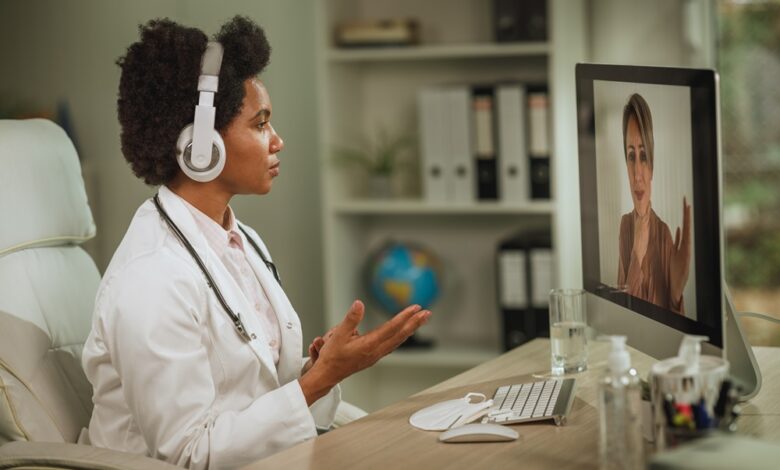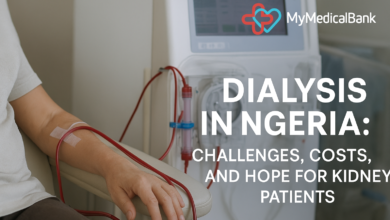How Telemedicine Helps to Improve Preventive Healthcare

Table of Contents
Telemedicine is a term that covers the use of technology to deliver clinical care at a distance. It ensures that a person receives healthcare when needed, especially for those with limited access to care.
Telemedicine uses electronic and telecommunication technology to provide an exchange of medical information, despite a person and their doctor not being in the same room.
Telemedicine allows a person to seek a doctor’s advice about nonemergency situations that do not require an in-office visit. It can be as simple as text messaging medical care to as advanced as remotely controlled surgery.
Experts have used telemedicine in clinical settings for decades, with its first reference in a clinical setting recorded in medical literature in the late 1950s–1960s.
Types Of Telemedicine
Telemedicine has several types, including:
- Real-time video communication
- remote monitoring, which involves health data being reported, collected, and evaluated, such as:
- blood pressures
- cardiac stats
- oxygen levels
- respiratory rates
- store-and-forward — storing and sharing medical information, such as:
- CAT scans
- MRIs
- X-rays
- photos, videos, and text-based patient data
What Is Preventive Healthcare?
Preventive Healthcare refers to medical processes and programs that are intended to identify and reduce health risks, delay the onset of disease, and enhance overall well-being. Preventive care’s main objective is to identify and treat potential health problems early on, which will ultimately lessen the burden of disease and enhance the quality of life. The different levels of prevention include:
1. Primary Prevention: This level focuses on preventing the onset of diseases or health conditions before they occur. It includes promoting healthy behaviors, such as regular exercise, a balanced diet, and avoiding tobacco and excessive alcohol consumption. It also involves immunizations to protect against infectious diseases and environmental interventions to reduce exposure to disease risk factors.
2. Secondary Prevention: Secondary prevention aims to detect diseases or conditions at an early stage to prevent their progression. It involves regular screenings and diagnostic tests to identify health issues before symptoms manifest. Early detection enables timely intervention and treatment, reducing the impact and complications of diseases. Examples include blood pressure checks, mammograms, Pap smears, and cholesterol tests.
3. Tertiary Prevention: Tertiary prevention focuses on managing established diseases and minimizing their impact. It includes disease management, ongoing treatment, rehabilitation services, and palliative care for individuals with chronic conditions. Tertiary prevention aims to improve the quality of life, prevent complications, and optimize disease management.
How Does Telemedicine Contribute to Preventive Care?
Telemedicine contributes to preventive care efforts by enabling services like virtual check-ups and screenings. This approach assists in the early detection and addressing of potential health concerns before they escalate. The benefits of telemedicine in preventive care are listed below:
1. Enhancing Accessibility: One of the primary advantages of telemedicine in preventive care is its ability to overcome geographical barriers and offer a more convenient way for patients to access healthcare services. This accessibility is particularly advantageous for individuals facing difficulties in reaching traditional healthcare settings, such as those residing in rural areas or with limited mobility. This eliminates the need for long travel distances and allows them to consult with healthcare providers from the comfort of their own homes. This accessibility factor is crucial in promoting preventive care, as it encourages more individuals to seek timely medical advice and screenings, ultimately reducing the risk of potential health complications.
2. Early Intervention and Monitoring: Telemedicine facilitates early intervention and proactive monitoring of patients’ health conditions. Through remote consultations, healthcare providers can offer guidance on preventive measures, such as healthy lifestyle choices, dietary recommendations, and exercise routines. Additionally, telemedicine platforms can provide patients with personalized reminders for health screenings, vaccinations, and regular check-ups, ensuring timely intervention and preventive care measures. Telemedicine helps to improve overall health outcomes by identifying health problems at an early stage, which slows the progression of diseases.
3. Chronic Disease Management: Telemedicine holds immense potential in the management of chronic diseases, a critical component of preventive care. Individuals with conditions like diabetes, hypertension, or cardiovascular diseases often require regular monitoring and medication adjustments. Telemedicine enables healthcare providers to remotely monitor patients’ vital signs, review self-reported symptoms, and provide appropriate guidance and medication management. The continuous remote monitoring aspect of telemedicine empowers patients to actively engage in self-care, leading to better disease management and reduced hospital admissions.
4. Health Education and Behavior Modification: Preventive care is not solely limited to medical interventions but also involves empowering individuals with knowledge and promoting behavioral changes. Telemedicine platforms offer an excellent opportunity for healthcare providers to educate patients about preventive measures, disease prevention strategies, and healthy lifestyle choices. Through virtual sessions, patients can receive guidance on nutrition, stress management, smoking cessation, and other crucial aspects of preventive care. Furthermore, telemedicine platforms often provide resources such as educational videos, brochures, and interactive tools to reinforce health education and encourage behavior modification.
5. Cost-Effectiveness: Telemedicine presents a cost-effective alternative to traditional healthcare delivery systems, benefiting both patients and healthcare systems. By eliminating the need for in-person visits, telemedicine reduces transportation costs, time off work, and other expenses associated with conventional healthcare. Additionally, remote consultations can prevent unnecessary emergency room visits or hospital admissions, leading to substantial cost savings for patients and healthcare providers alike. Moreover, telemedicine enables healthcare professionals to reach a larger patient population, maximizing their efficiency and optimizing resource allocation.
6. Improves Mental Health Care: Telemedicine is an increasingly popular option for delivering mental health care in primary care settings. Referred to as telepsychiatry, it involves using technology to remotely provide mental health services. Physicians can connect with their patients through video conferencing, text messages, and email. Research has shown that telepsychiatry is a safe and effective approach for diagnosing and treating mental illnesses, comparable to in-person care. Moreover, it addresses the issue of limited access to mental health services in underserved areas. The utilization of telemedicine for mental health has experienced significant growth in recent years. The growing demand for mental health services and technological advancements drives this trend.
7. Data Management and Population Health: Telemedicine platforms have strong data management features that help in preventive care for the population. Aggregate data collected through telemedicine can be analyzed to identify trends, risk factors, and patterns of disease prevalence. This information can inform targeted interventions and public health strategies to improve preventive care outcomes on a larger scale.
Conclusion
Telemedicine bridges the exchange of medical information between the doctor and the patient through technology. The service ranges from email to sharing relevant information and test results to robotic-assisted interventions.
Telemedicine has transformed preventive care by bringing healthcare services to people’s homes, enhancing accessibility, and encouraging early intervention. It enables people to take an active role in their own preventive care journey by allowing for the remote monitoring of chronic diseases, patient education, and behavior modification. In the coming years, growing trends in telemedicine technology are set to become vital in shaping preventive care’s future.
.Facebook | Instagram | Linkedln| Youtube | Get Direction To Our Office



